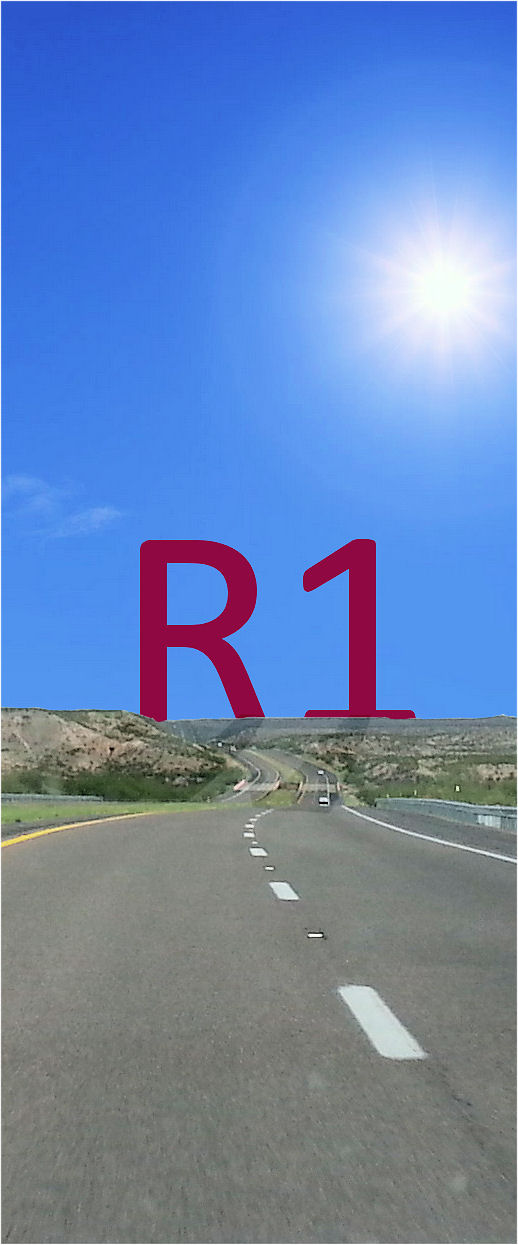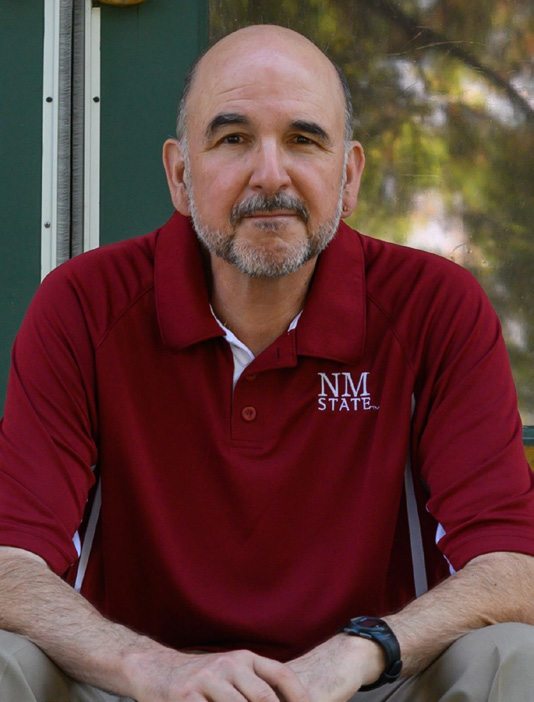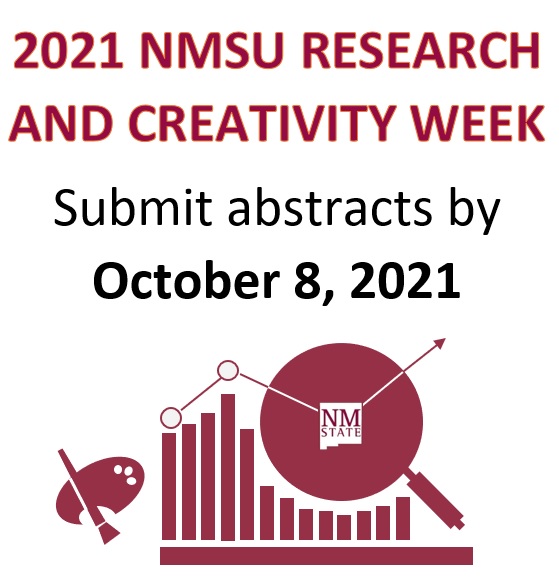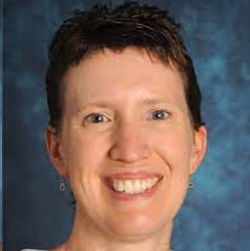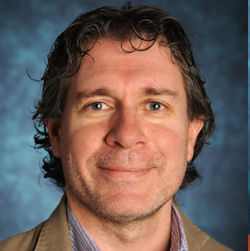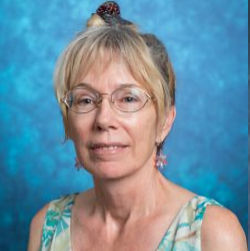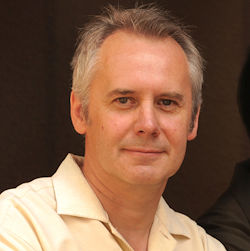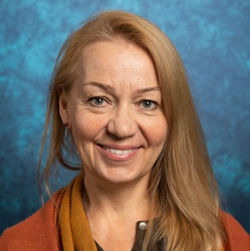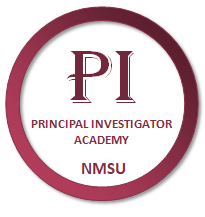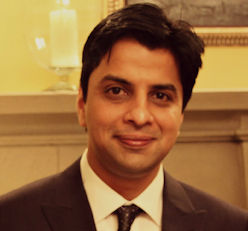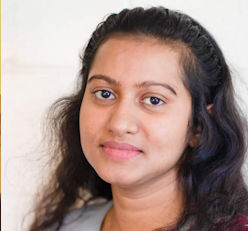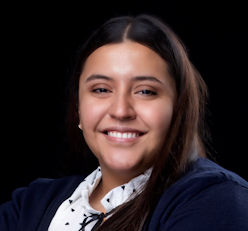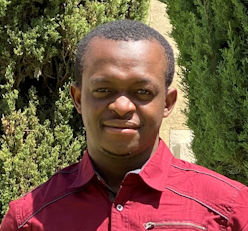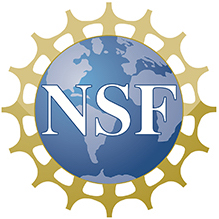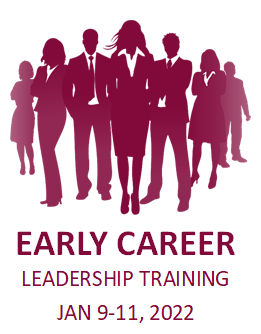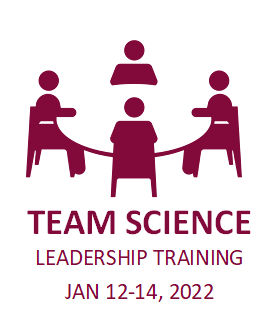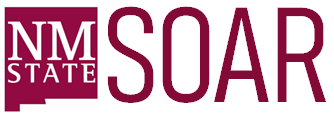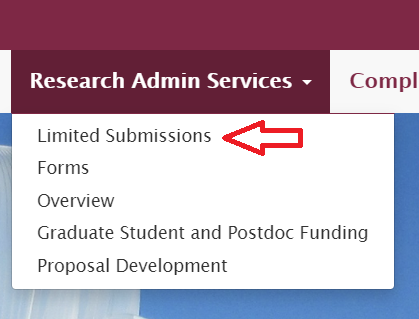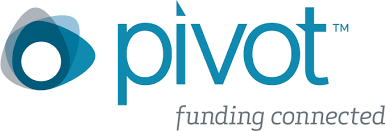 |
|
Where Are We on the R1 Trajectory?By Luis Cifuentes, Ph.D., Vice President for Research and Dean of Graduate School, NMSU
“By 2025, the NMSU system will excel in student success and social mobility for our diverse student populations, achieve the highest Carnegie research status (R1), and maintain our Carnegie Community Engagement classification.” NMSU LEADS 2025 Vision Before answering the question, I wish to briefly address the past decade of NMSU’s research enterprise. In FY2010, we were in the top 100 nationally at $158M in annual research and development (R&D) expenditures. By FY2018, we dropped to 160, owing to a nearly 40% loss in annual R&D expenditures. During this same time period, Kansas State University, a Land Grant and President Floros’s previous institution, increased by 35%. This decade, NMSU is on the upswing. Last month, HeliosCampus, a higher education analytics firm, reported on their recent NMSU campus survey. Overall, NMSU scored positively. The survey underscored NMSU personnel’s desire to return to R1, one of three components of our LEADS 2025 Vision, and, consequently, to have greater opportunities in research, scholarship and creative activity. For me, it was encouraging and energizing to hear that our campus has bought in on the LEADS 2025 Vision and Goal 2, Elevating Research and Creativity, and, it must be said that this is the result of Chancellor Arvizu’s, President Floros’s and our leadership team’s prioritization of and investment in the research enterprise. Now, back to our R1 trajectory. Carnegie intentionally rewards well-rounded institutions, specifically those with some presence in non-STEM research, doctoral degrees in the humanities and social sciences, and a significant body of post-doctoral and research scientists. In the following, I will be making comparisons to FY2018, the reporting year before the present leadership team was installed. First, annual R&D expenditures in FY2021 increased for the third year in a row, growing by $13 million from a decade low of $96.3 million in FY2018 to $110.6 million in FY2021. At the present rate of increase, annual R&D expenditures should exceed the LEADS 2025 goal of $120 million by 2024. Second, the trend of annual R&D expenditures in non-STEM fields, which are critical to our R1 goal, was in the opposite direction during the same time period, decreasing from $2.5 million to $1.1 million. To counter this trend, my office with support of the Provost will invest $250K to support humanities, arts, and social sciences faculty in engaging in externally-funded creative activities. In preparation, the Goal 2 team is meeting with a small group of humanities and arts faculty and department heads to better understand issues in pursuing external funding and how best to invest these funds.
Third, the number of post-doctoral researchers and research scientists with PhDs, another key Carnegie R1 metric and low hanging fruit in my opinion, have more than doubled since the last Carnegie classification. This is the result of significant investment by both my office and colleges, and creative leveraging of external funding. Turning around decreasing enrollment of PhD students in past years, a consequence of COVID-19’s impact on international recruitment, is now a key priority for the Graduate School and colleges. With support and encouragement of the Provost, proposals for new PhDs, which will increase PhD graduates in the social sciences and humanities, are in the works. These include a Transborder and Global Human Dynamics PhD and a Border Studies PhD, respectively. While not R1 metrics, graduate student funding and undergraduate research are NMSU priorities. With respect to graduate students, the past two years have experienced an increase in financial support, owing principally to Higher Education Emergency Relief Funds. Additionally, a culture of budgeting tuition and health care on external fund requests, mandated by my office officially in FY2020, took root in FY2021. Processes needed to nimbly expend those moneys, however, are in need of improvement and will be a priority in FY2022. Finally, and with respect to undergraduate research, Honors College dean, Dr. Phame Camarena, hired a faculty fellow to lead the new Center for Undergraduate Research and Creative Activity. |
|
Promoting NMSU LEADS 2025 Goal 2: Engaging undergraduate students with the research and creative life of the university while encouraging graduate school enrollment.By Phame Camarena , Ph.D., Dean, Conroy Honors College
Efforts to “Elevate Research and Creativity” and build NMSU’s capacity for R1 status are simultaneously linked with our campus efforts to promote student success and social mobility. Recognizing that student participation in the research and creative work of faculty represents a high impact learning practice, Provost Parker has provided support to hire Dr. Tracey Miller-Tomlinson as a Faculty Fellow and Founding Director of the Center for Undergraduate Research and Creative Activity, as a university service coordinated out of the Honors College. Dr. Miller-Tomlinson will be working with both students and faculty members to increase the number of undergraduate students participating in RCW (Fall) and URCAS (Spring) on-campus conferences, and to increase the number of undergraduate students with authorship on academic and professional work presented and published off campus (2.2.4 actions). Center initiatives are currently focused on identifying a community of scholars across the academic colleges to consult on this work, exploring ways to more intentionally introduce students to these opportunities earlier in their academic careers, developing a website hub for student-faculty connections and resources for getting started, and connecting undergraduate research and creative activity to graduate student achievement through NMSU’s MAP programs. Drs. Anne Hubbell (Honors) and Carol Flinchbaugh (Grad School) are currently working with partner offices to streamline the processes that will permit these undergraduate students to begin graduate work earlier in their NMSU careers! Dr. Miller-Tomlinson and Dr. Leslie Edgar (ACES Associate Dean of Research) are leading a pilot “open-house” program during this Fall’s RCW week of activities to introduce undergraduates to some of the labs and studios across campus where they can engage with this scholarly work. Please see the announcement below and contact Dr. Miller-Tomlinson to be included in this pilot program. Strategies to more effectively track undergraduate participation in this scholarly work are being developed, and should help us document the connection of this work to graduate student enrollment, and to confirm that student success (Goal 1) and elevating research and creative activity (Goal 2) are inextricably interconnected! |
|
Deadline to Submit Abstracts for Research and Creativity Week: October 8, 2021By Hamid Mansouri Rad, Ph.D., Senior Proposal Development Specialist, RAS
The third annual Research and Creativity Week (RCW) will be held face to face and virtually from November 2nd through November 5th . Organized by the University Research Council (URC), RCW will include a diverse program of talks and posters by NMSU faculty, staff, and students. The deadline to submit abstract for the 2021 RCW is midnight on October 8, 2021. Those interested in submitting abstracts on research, scholarly work, oral presentations, media installations, short performance or other creative activities should visit the registration website. For more information, please send email to the URC Chair, Dr. Chris Sroka at csroka@nmsu.edu. RCW is sponsored by OVPRGS, Office of the Provost, the Colleges of Engineering, Arts & Sciences, ACES, Business, and HEST, the New Mexico Space Grant Consortium, and the Arrowhead Center. |
|
Celebrating NMSU's Large Proposal Submitters (Month of September)!
By Hamid Mansouri Rad, PhD, Senior Proposal Development Specialist, RAS
Congratulations to Drs. Michèle Shuster (Department of Biology), Enrico Pontelli (Dean of the College of Arts and Sciences) and Barbara Lyons (Department of Chemistry and Biochemistry) for successfully submitting their proposals, each exceeding a million in dollar value. Dr. Shuster and her team successfully submitted their proposal titled, “NIH FIRST Program” to the National Institutes of Health (NIH) for $10.8 million. Dr. Pontelli and his colleagues submitted their proposal titled, "NRT-AI: Artificial Intelligence for Arid Land Agriculture" to National Science Foundation Research Traineeship Program for $2 million. And finally, Dr. Barbara Lyons and her team submitted their proposal titled, "Bridges to the Baccalaureate Program at NMSU" to NIH. The $1.6 million proposal aims to extend this existing project to enhance preparedness of American Indian and Hispanic students in two New Mexico community colleges (Dona Ana and San Juan College) and advance them to baccalaureate degree programs aligned with biomedical sciences. In the context of becoming an R1 university, the submission of a $100,000 non-STEM R&D proposal is equivalent of a million-dollar proposal in STEM areas. Therefore, we equally celebrate the efforts of Drs. Neil Harvey (Head of the Department of Government) and Monika Glowacka-Musial (NMSU Library), as well as Marisa Sage (Director of the NMSU Art Museum) in helping to advance NMSU’s scholarly activities in arts, humanities, and social sciences. In the past few months, they, along with their teams, submitted outstanding proposals. Dr. Harvey submitted a proposal exceeding $400,000 in value to NSF Research Experiences for Undergraduate Students to continue their research on immigration policy and US-Mexico border communities. Dr. Glowacka-Musial and her colleagues submitted NMSU’s largest proposal, according to our records, ($350,000) to National Endowment for the Humanities to digitize and increase access to 15,000 pages of correspondence from the Amador family, a Mexican-American family of prominence in the border region of southern New Mexico and northern Chihuahua, Mexico during the 19th and early 20th centuries. Similarly, Marisa Sage and her team submitted a $150,000 proposal to NEH American Rescue Plan to secure funding for a Collection Registrar position to bring the NMSU art collections-based exhibitions onto a virtual platform for digital research, engagement and global access. We appreciate and recognize the efforts of all our faculty and staff who are engaged in research and scholarly activities at NMSU. “My office is there to assist our faculty and staff in developing and submitting their proposals effectively,” states Dr. Cifuentes. “I would like to remind our readers that a key LEADS 2025 Goal 2 tactic is to encourage and support PIs with best capture management practices to solicit large grants (i.e., > $1 million in STEM R&D; > $100 K in Non-STEM R&D)” he adds.
Pictures: From top, Drs. Michèle Shuster (Professor of Biology), Enrico Pontelli (Dean of the College of Arts and Sciences), Barbara Lyons (Professor of Chemistry and Biochemistry), Neil Harvey (Professor and Head of the Department of Government), Monika Glowacka-Musial (Metadata Librarian, NMSU Library), and Ms. Marisa Sage (Director of NMSU Art Museum) |
|
2021-2022 Principal Investigator Academy Kick-Off
By Cynthia Ramirez, M.S., Proposal Development Specialist, RAS
The 2021-2022 NMSU PI Academy kicked off with faculty and post-docs invited by the Vice President for Research this September. This year’s members were once again nominated by their College Deans and will join the Academy sessions either via Zoom or in-person. The first session was presented by the Vice President for Research, Dr. Luis Cifuentes. Sessions for the PI Academy will be held monthly for the academic year and will be presented by senior faculty, Proposal Development Specialists and invited guests. |
|
Graduate Student LEADS: Leveraging Existing Assets and Data for ScholarshipBy Jagdish Khubchandani, Ph.D., Professor, Publich Health
The COVID-19 pandemic disrupted lives around the world. Students and educators were not spared either; with growing and ongoing concerns about suboptimal pedagogy-related outcomes, inadequate student-centered learning, and lack of scholarly and creative experiences for students. In my field (i.e. public health), we deal with emotions, attitudes, knowledge, perceptions, and behaviors- with people at the center of all initiatives and efforts to influence these traits. Given the disruptions caused by the pandemic, limited human interactions, and the fact that I moved to NMSU in the middle of the pandemic, I was not sure how I would move forward with research and creative endeavors. Thankfully, a few graduate students at NMSU scheduled meetings with me and wanted to pursue research- a highly encouraging sign for the NMSU community and the field of public health. Most of these students had no prior research experience, had to graduate soon, and couldn’t wait for any data or funding to come through. These are factors that I now consider immaterial, as long as the desire to learn is evident. Quickly, I did two things. First, I reviewed the NMSU LEADS goals and objectives. Second, I asked these students about their areas of interest and career goals, their views on the current events and the pandemic, and how they see themselves contributing to public health in the future. Incidentally, our conversations revolved a lot around the COVID-19 pandemic and how vaccinations could help us put the pandemic behind us. What followed was a series of high-quality global evidence synthesis projects resulting in publications and outcomes aligned with the NMSU LEADS goals and objectives. Yilda Macias, a first-generation NMSU public health graduate student shared that she was surprised at COVID-19 vaccine refusal among friends and family in the border community. We discussed this issue further and realized that the border community has a lot of marginalized people and racial/ethnic minorities. What if we could review all the evidence on such individuals and provide recommendations for action? Yilda reviewed a sample of 107, 841 American adults and found that 41.6% of African American adults and 30.2 % of Hispanics in the U.S. were hesitant towards COVID-19 vaccination. Yilda’s paper was published recently and gained broader attention from the media, scientific community, and has also been cited by the CDC. While discussing a local problem, Yilda ended up providing potential solutions for global communities. As stated in the NMSU LEADS objectives- “Amplify the impact of research findings by addressing local needs that align with global challenges”
Through the experiences with these students and via our publications, I learned a few lessons as well. First, where there is a will, there is a way. Given the restrictions due to the pandemic, we must use innovative methods to conduct research (e.g. technology, artificial intelligence, social media, evidence synthesis, big data, etc.). Second, any research experience is valuable for students- conference presentations, case studies, literature reviews, existing data analyses- anything helps. Toheeb is now pursuing his Ph.D. at an esteemed Midwestern University and he tells me that his work at NMSU has better prepared him for his doctoral work. Other students on our team are now preparing and aiming for doctoral education, scientific professions, and government and policy-related careers. Finally, our society values certain professions and fields of study more than others. But, even those in social and behavioral sciences and humanities can make a difference and become a prominent voice (as evidenced by the attention generated by our publications). It is encouraging to know that NMSU LEADS aims to “Intentionally grow humanities, social sciences, and creative arts to achieve comprehensive excellence in research and creative activity”. The biggest lesson for me has been that our students have much to teach us and are a force to reckon with! Go Aggies! |
Dr. Jagdish Khubchandani, Professor of Public Health, NMSU
Nirbachita Biswas, NMSU Nursing Graduate Student
Yilda Macias, NMSU Public Health Graduate Student
Toheeb Mustapha, NMSU Public Health Graduate Student |
Streamlyne Implementation: Update
By Phillip De Leon, Ph.D., Associate Vice President for Research
|
|
DRYAD Data Repository Now Available at NMSU
By Hamid Mansouri Rad, Ph.D., Senior Proposal Development Specialist, RAS
In response to funding agency mandates and trends toward increased data set publishing, OVPRGS has purchased institutional membership in the DRYAD data repository/data publishing platform. DRYAD hosted a webinar on Getting Started with this application on Tuesday, September 28th. Introductory materials provided, as well as a recording of the webinar, are made available at the “Resources for Investigators” page within the NMSU Research website. |
|
Designing Research for Broader Impacts: An NSF Virtual Training ProgramBy Hamid Mansouri Rad, Ph.D., Senior Proposal Development Specialist, RAS
National Science Foundation (NSF) in collaboration with Southwest i-Corps is offering training sessions on techniques to improve the broader impacts of your research proposals. The program encourages principal investigators interested to also invite their research teams to take full advantage of this training. Training dates are October 25 and 26, November 1, 8, and 15, 2021. For more information please download the program's flyer. Questions about this program should be directed to Max Green at info@ratioflux.com. |
|
Early Career Leadership Workshop: January 9-11, 2022By Hamid Mansouri Rad, Ph.D., Senior Proposal Development Specialist, RAS
New Mexico EPSCoR office is sponsoring a three-day intensive workshop geared towards early career faculty in STEM disciplines. The workshop aims to enhance the professional skills of early career faculty (and postdoctoral scholars). Topics include meeting facilitation and leadership, incorporating broader impacts into research, communicating science to the media, effective teaching in higher education, project management, and work-life integration. Eligibility: Participants must be postdocs, junior faculty (assistant professor level) or STEM professionals who have received their Ph.D. within 5 years of the workshop and are currently employed at a New Mexico academic institution or national laboratory. Location: Sevilleta Field Station, Socorro, New Mexico (Lodging, meals, and training materials will be provided). Registeration: Registeration is required for this workshop. Those interested must register online by October 18, 2021. For more information, please contact Selena Connealy at connealy@epscor.unm.edu. |
|
Team Science Leadership Workshop: January 12-14, 2022
By Hamid Mansouri Rad, Ph.D., Senior Proposal Development Specialist, RAS
New Mexico EPSCoR office is sponsoring a three day workshop on Team Science Leadership for mid-career or senior faculty or STEM professionals in New Mexico. The goal of the workshop is to help participants develop skills for managing collaborative, interdisciplinary, and complex projects. Topics include building and leading diverse and productive teams, project management skills, strategic planning, and communications. Eligibility: Participants must be faculty or professionals in STEM fields from New Mexico academic institutions or national laboratories. Location: Sevilleta Field Station, Socorro, New Mexico (Lodging, meals, and training materials will be provided). Registeration: Registeration is required for this workshop. Those interested must register online by October 18, 2021. For more information, please contact Dr. Bill Michener at william.michener@gmail.com. |
|
Post-doc Position Available at NMSU SOARThis is remind the NMSU community that NMSU Southwest Outreach Academic Research Evaluation and Policy Center is accepting applications for a post-doc position. The person would work closely with the SOAR Director Dr. Rachel Boren on evaluation projects being undertaken from across NMSU and the state of New Mexico. To learn more about the position and apply, interested applicants must visit https://jobs.nmsu.edu/postings/42963. |
|
Limited Submission Funding OpportunitiesBy Hamid Mansouri Rad, Ph.D., Senior Proposal Development Specialist, RASResearch Administration Services maintains a list of limited submission funding opportunities for NMSU research community. The list is accessible through a link on the Research website, through the Research Administration tab. NMSU users can also access the list directly on SharePoint. We encourage NMSU researchers to periodically visit the site and if they are interested in any of the opportunities to please inform us by sending email to ras@nmsu.edu. |
|
Pivot Funding Opportunity Database
By Hamid Mansouri Rad, Ph.D., Senior Proposal Development Specialist, RAS
This is a reminder that in order to assist NMSU faculty and staff in locating external funding opportunities, the OVPRGS has purchased a subscription to ProQuest’s Pivot available at https://pivot.proquest.com/session/login.
To request a one-on-one or group Pivot training, send email to hamid@nmsu.edu. |
|
Graduate School |
|
What's Happening across NMSU Graduate Programs? Student Recruitment Strategies
By Carol Flinchbaugh, Associate Professor of Management and Graduate School Faculty Fellow
One LEADS 2025 goal for the Graduate School is to develop targeted recruitment strategies for doctoral students, especially women and minorities. The starting point to address this goal is to understand what programs are currently doing as far as student recruitment. I want to thank the more than 20 faculty, program coordinators, and department heads who provided helpful information about their existing doctoral program recruitment methods. I received a diverse mix of answers from “no recruitment” to “we hope to have a doctoral program in three years!” What I was able to discern is that most programs recruit for students at professional associations and conferences. Others post open graduate assistantship positions on industry-related online job boards. Many of you rely on networking with colleagues at other institutions (higher education and PK-12). Several faculty mentioned internal recruitment strategies to their existing undergraduate courses. Specific to this last point, the Graduate School hopes to improve graduate enrollment through improved marketing of the Master’s Accelerated Programs and marketing program content into SLATE the application system (see details below). There are several strategies that several programs identified that address our goal of targeted recruitment strategies for women and minorities. Many of your fields have existing associations specific for minorities, such as the Annual Biomedical Research Conference for Minority Students (ABRCMS), the PhD Project for business programs, SACNAS for STEM fields. Please reach out to the Graduate School for support in these areas. Lastly, many of you utilize SLATE to identify prospective students who have inquired or applied to your programs and invite them to a virtual event, such as Astronomy’s “meet and greet” Zoom sessions in October/November, where faculty and current graduate students answer questions for prospective students. If you are interested in learning more about using SLATE to market to students, please attend the upcoming EAB workshop about developing and communicating specific program messages to prospective students. The hour-long session is on Friday, October 15th at 11 am via zoom: https://eab.zoom.us/j/5731653442 |
|
Need Guidance on Securing External Funding? Contact Me!
If you are an NMSU graduate student or post-doctoral scholar needing guidance on securing external funding, please contact me at fee@nmsu.edu. Please also visit the list of current funding opportunities that I maintain on SharePoint and let me know if you have any questions. Chong-Hwey Fee |
|
Questions and comments regarding NMSU’s Research Digest should be directed to Hamid Mansouri Rad, Ph.D. at hamid@nmsu.edu, (575) 646-6429. |
|
